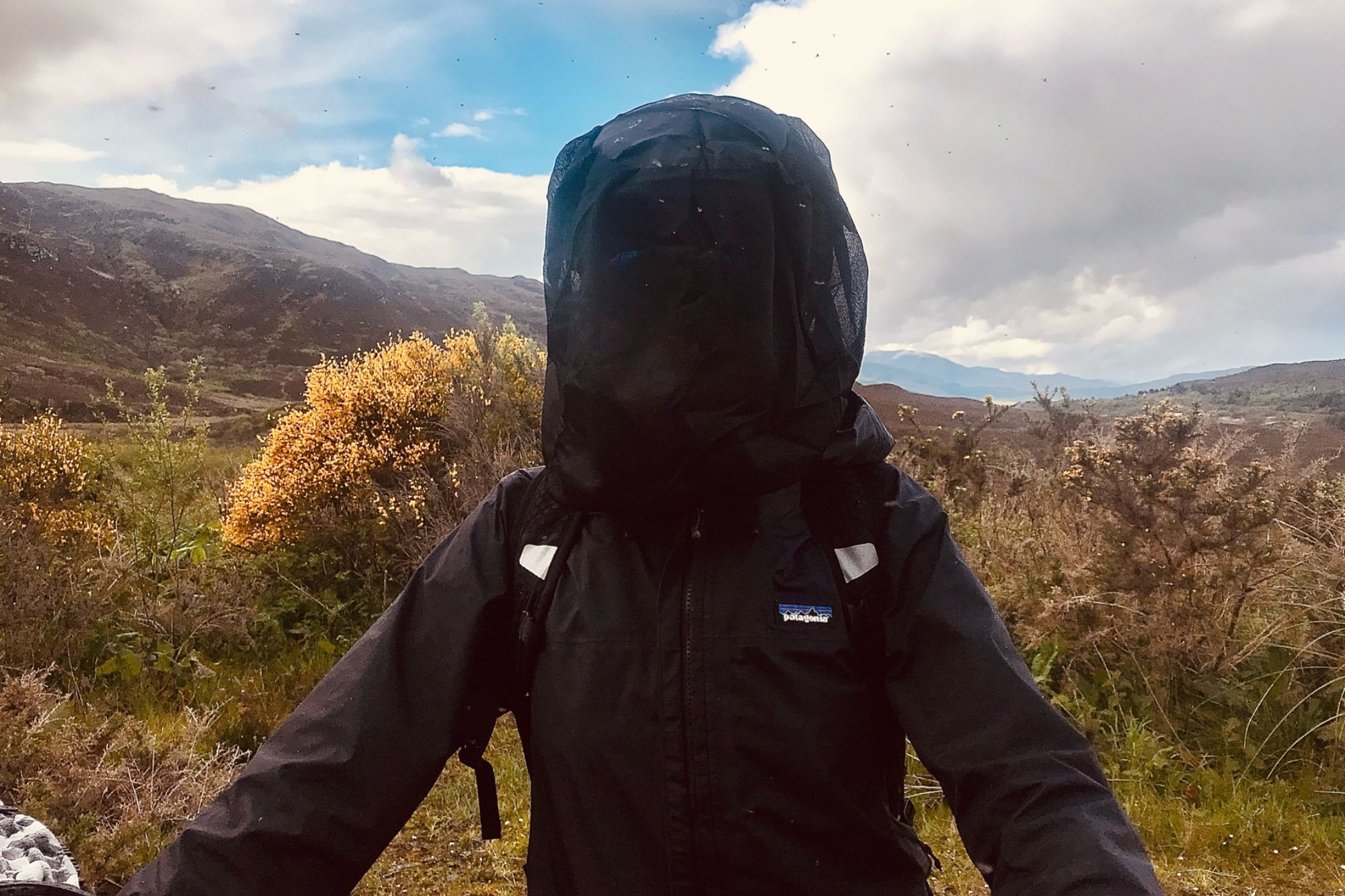Meeting the Famous Midge of Scotland

They'd warned us. Told us to prepare and buy the proper headwear.
"If you're going into western Scotland in June, get ready for the swarm." Several people we met on our way north loved to bring up the midges. By the time we got to Scotland this curious being felt like a familiar friend, even though we'd never met before.
Although I'd heard several descriptions of the Midge for months ahead of our tour, I eventually decided they must be the same as Mosquito. It's probably what the Scottish folk call mosquitos, we can handle that.
We arrived to the lands of the lochs by mid-May and something peculiar started happening.
"There are loads of tiny biting gnats around," I said one evening as we set up the tent.
"Yeah, they're biting my ears," Steven replied with a swish of his hand to shoo them away.

It took a few days and rising numbers of gnats for us to realize:
We'd met the famous Midge.
Over the next few weeks they followed us in clouds of mirth, a party in the air making us dance, run and hop as we set up camp each night and finally dove into the tent. We perfected a method for unpacking and packing without letting too many midges into the tent.
They inevitably made it in.
Our clothing and bodies became funeral halls full of squished Midge bodies. Sorry little ones.
These persistent buggers feasted on our faces, fingers and any exposed skin, and they loved Steven the most. Apparenlty midges really do prefer some people over others and he was their No 1 choice. I don't blame them. It's the ginger hair after all... Okay, that's the only attempt at a ginger tease you'll find on this blog.
I often wondered why we didn't meet many Scottish people during this time. A British man we met told me, "they're in hiding." From the midges or the tourists?

So WHY are the midges even in Scotland?
It's the water, climate change and deforestation.
Higher temperatures account for increased insect populations and longer warm seasons allow them to thrive.
Deforestation over hundreds - thousands - of years have created a habitat ideal for midge breeding. Much of the treeless landscape is exhausted and the wet desert conditions are ideal for midges. We often felt as though the prevelance of midges was Nature's way of getting back at us. Nature isn't a vengeful force, but merely responding to the conditions we create. Midges do provide a food source for many other species, including spiders, birds and bats.
These delicate yet feisty mischief-makers are resilient only in certain weather conditions. We felt great relief on sunny and windy days. Who knew where the midges were hiding then?
Our helmets off to you Midge, you've won. Or maybe we'd better keep them on, net hat and all.


Bites and...some kind of warrior stance to ward of the midges? Or maybe we were tossing grapes into each other's mouthes.

Written by Karla Sanders @karlasandersart | Photos by Steven Tiller @steventiller
